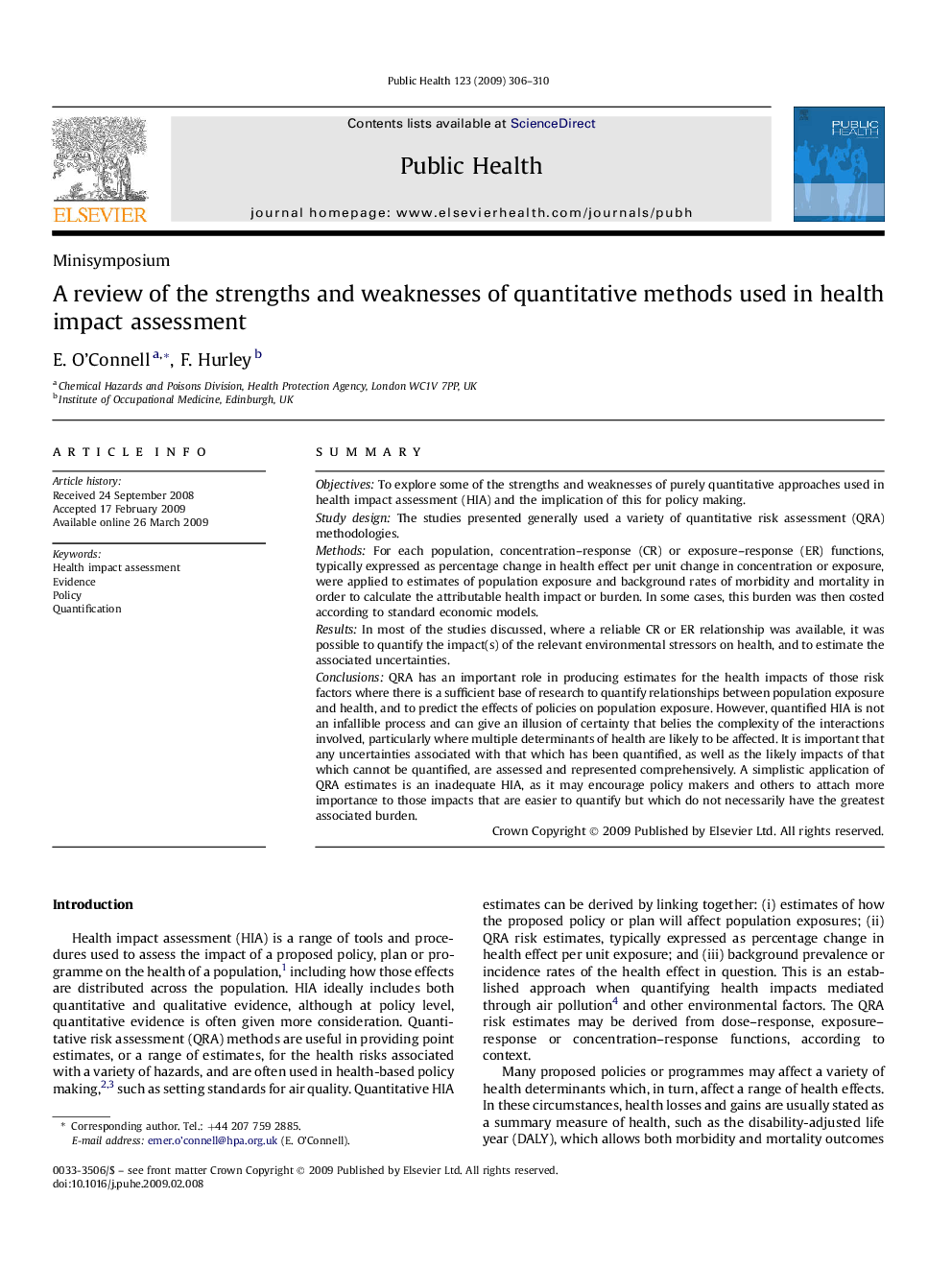| کد مقاله | کد نشریه | سال انتشار | مقاله انگلیسی | نسخه تمام متن |
|---|---|---|---|---|
| 1088185 | 951572 | 2009 | 5 صفحه PDF | دانلود رایگان |

SummaryObjectivesTo explore some of the strengths and weaknesses of purely quantitative approaches used in health impact assessment (HIA) and the implication of this for policy making.Study designThe studies presented generally used a variety of quantitative risk assessment (QRA) methodologies.MethodsFor each population, concentration–response (CR) or exposure–response (ER) functions, typically expressed as percentage change in health effect per unit change in concentration or exposure, were applied to estimates of population exposure and background rates of morbidity and mortality in order to calculate the attributable health impact or burden. In some cases, this burden was then costed according to standard economic models.ResultsIn most of the studies discussed, where a reliable CR or ER relationship was available, it was possible to quantify the impact(s) of the relevant environmental stressors on health, and to estimate the associated uncertainties.ConclusionsQRA has an important role in producing estimates for the health impacts of those risk factors where there is a sufficient base of research to quantify relationships between population exposure and health, and to predict the effects of policies on population exposure. However, quantified HIA is not an infallible process and can give an illusion of certainty that belies the complexity of the interactions involved, particularly where multiple determinants of health are likely to be affected. It is important that any uncertainties associated with that which has been quantified, as well as the likely impacts of that which cannot be quantified, are assessed and represented comprehensively. A simplistic application of QRA estimates is an inadequate HIA, as it may encourage policy makers and others to attach more importance to those impacts that are easier to quantify but which do not necessarily have the greatest associated burden.
Journal: Public Health - Volume 123, Issue 4, April 2009, Pages 306–310